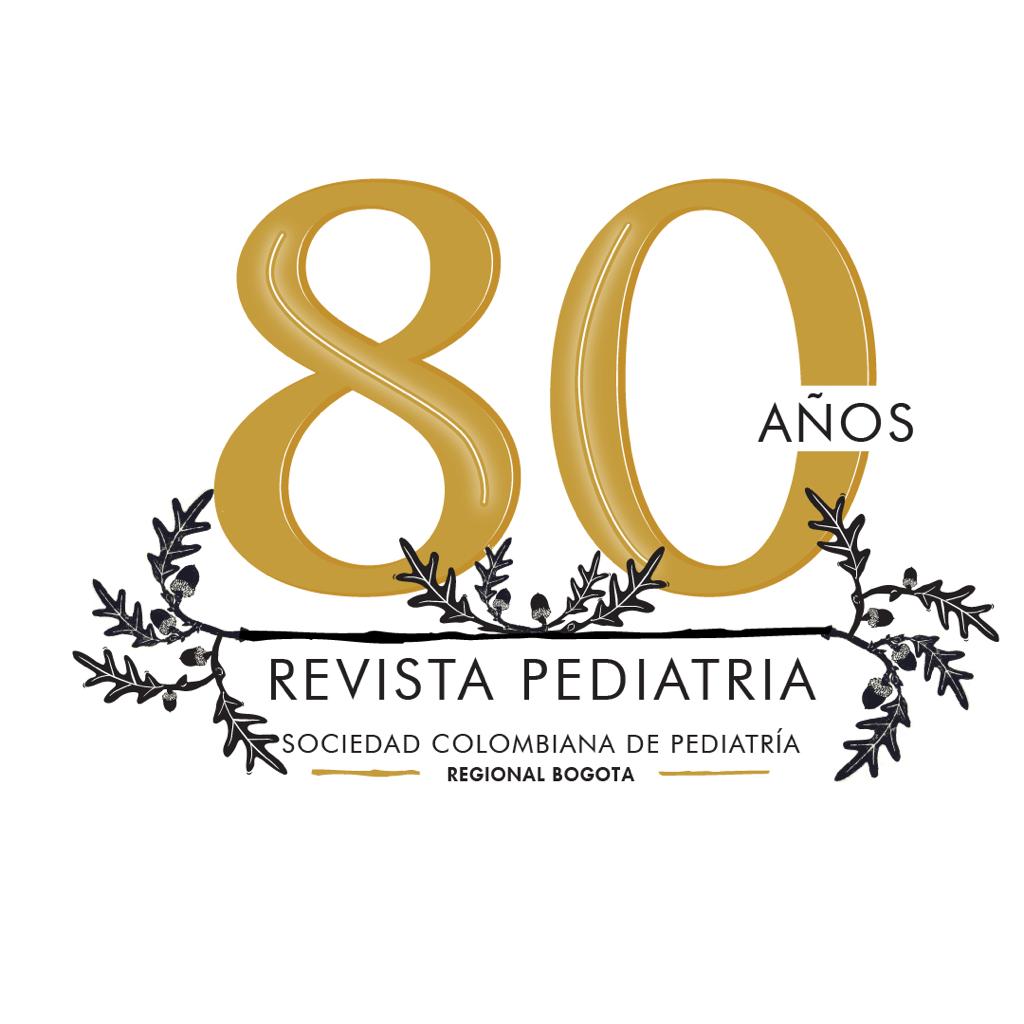Inpatient COVID-19 in children: A Colombian children hospital experience
Main Article Content
Abstract
Introduction: COVID-19 in pediatric age is described with less severity, although the literature in this age group is limited, mainly in the local context. The present study describes the sociodemographic, clinical characteristics, and outcomes of hospitalized patients under 18 years of age with a confirmed diagnosis of COVID-19. Methods: Observational, descriptive, retrospective cohort-type study in pediatric patients diagnosed with SARS-CoV-2 hospitalized at the Colsubsidio Children's Clinic in Bogotá, Colombia, between March 2020 and April 2021. Results: 230 patients were included, with two epidemiological peaks: August 2 020 and April 2 021; There was a predominance of the male gender (57.4 %) and the age under two years. The main symptoms were cough (60 %), nasal congestion (33.9 %), and diarrhea (22.2 %). The mean stay was 7.8 days (SD: 13.9 days), and 25.2 % required management in the PICU. 60 % of the cases presented lymphopenia and thrombocytopenia. The main finding on the chest radiograph was peribronchial thickening. 25.2 % (n = 58) were treated with steroids and 5.2 % (n = 12) with immunoglobulin in the context of Multisystemic Inflammatory Syndrome related to COVID19 (MIS-C). 38.3 % had antibiotic management for suspected bacterial coinfection. Mortality was 2.2 %. Conclusion: COVID-19 in children has differences compared to adults; our study showed greater severity at a lower age range, a predominance of the male gender, and a lower mortality rate than that of hospitalized adults. Local context studies are required.
Downloads
Article Details

This work is licensed under a Creative Commons Attribution-NonCommercial-NoDerivatives 4.0 International License.
Creative Commons
License Attribution-NonCommercial-ShareAlike 4.0 International (CC BY-NC-SA 4.0)
You are free to:
Share - copy and redistribute the material in any medium or format.
Adapt - remix, transform, and build upon the material The licensor cannot revoke these freedoms as long as you follow the license terms.
• Attribution — You must give appropriate credit, provide a link to the license, and indicate if changes were made. You may do so in any reasonable manner, but not in any way that suggests the licensor endorses you or your use.
• NonCommercial — You may not use the material for commercial purposes.
• ShareAlike — If you remix, transform, or build upon the material, you must distribute your contributions under the same license as the original.
• No additional restrictions — You may not apply legal terms or technological measures that legally restrict others from doing anything the license permits.
References
Serrano-Cumplido A, Antón-Eguía Ortega PB, Ruiz García A, Olmo Quintana V, Segura Fragoso A, Barquilla Garcia A, et al. COVID-19. History repeats itself and we keep stumbling on the same stone. Semergen. 2020;46(January):48–54.
Gaythorpe KAM, Bhatia S, Mangal T, Unwin HJT, Imai N, Cuomo-Dannenburg G, et al. Children’s role in the COVID-19 pandemic: a systematic review of early surveillance data on susceptibility, severity, and transmissibility. Sci Rep [Internet]. 2021;11(1):1–14. Available from: https://doi.org/10.1038/s41598-021-92500-9
García-Salido A, de Carlos Vicente JC, Belda Hofheinz S, Balcells Ramírez J, Slöcker Barrio M, Leóz Gordillo I, et al. Severe manifestations of SARS-CoV-2 in children and adolescents: from COVID-19 pneumonia to multisystem inflammatory syndrome: a multicentre study in pediatric intensive care units in Spain. Crit Care. 2020;24(1):666.
R Core Team. R: A language and environment for statistical computing. [Internet]. 2020. Available from: https://www.r-project.org/
World Health Organization. Director-General’s remarks at the media briefing on 2019-nCoV on 11 February 2020 [Internet]. 2020. Disponible en: http://www.who.int/dg/speeches/detail/who-director-general-s-remarks-at-the-media-briefing-on-2019-ncov-on-11-february-2020
Dong Y, Dong Y, Mo X, Hu Y, Qi X, Jiang F, et al. Epidemiology of COVID-19 among children in China. Pediatrics. 2020;145(6).
Anandh U. SARS CoV-2 infection in children. J Ren Nutr Metab. 2020;6(1):12.
Wei M, Yuan J, Yu L, Fu T, Yu X, Zhang Z-J. Novel Coronavirus Infection in Hospitalized InfantsUnder 1 Year of Age in China. 2020;223(13):1313–4.
Ramanathan K, Antognini D, Combes A, Paden M, Zakhary B, Ogino M, et al. Since January 2020 Elsevier has created a COVID-19 resource centre with free information in English and Mandarin on the novel coronavirus COVID- research that is available on the COVID-19 resource centre - including this for unrestricted research re-use a. 2020;(January):19–21.
Centers for Diasease Control and Prevention. CDC. Science Brief: Transmission of SARS-CoV-2 in K-12 Schools and Early Care and Education Programs – Updated [Internet]. 2021 [cited 2021 May 9]. Disponible en: https://www.cdc.gov/coronavirus/2019-ncov/more/science-and-research/transmission_k_12_schools.html
Instituto Nacional de Salud. COVID-19 en Colombia [Internet]. 2021 [cited 2021 Feb 19]. Available from: https://www.ins.gov.co/Noticias/paginas/coronavirus.aspx
Leidman E, Duca LM, Omura JD, Proia K, Stephens JW, Sauber-Schatz EK. COVID-19 Trends Among Persons Aged 0–24 Years — United States, March 1–December 12, 2020. MMWR Morb Mortal Wkly Rep. 2021;70(3):88–94.
Lee B, Raszka, W. COVID-19 Transmission and Children: The Child Is Not to Blame. Pediatrics. 2020;146(2).
Liguoro I, Pilotto C, Bonanni M, Ferrari ME, Pusiol A, Nocerino A, et al. SARS-COV-2 infection in children and newborns: a systematic review. Eur J Pediatr. 2020;179(7):1029–46.
Irfan O, Muttalib F, Tang K, Jiang L, Lassi ZS, Bhutta Z. Clinical characteristics, treatment and outcomes of paediatric COVID-19: A systematic review and meta-analysis. Arch Dis Child. 2021;106(5):440–8.





